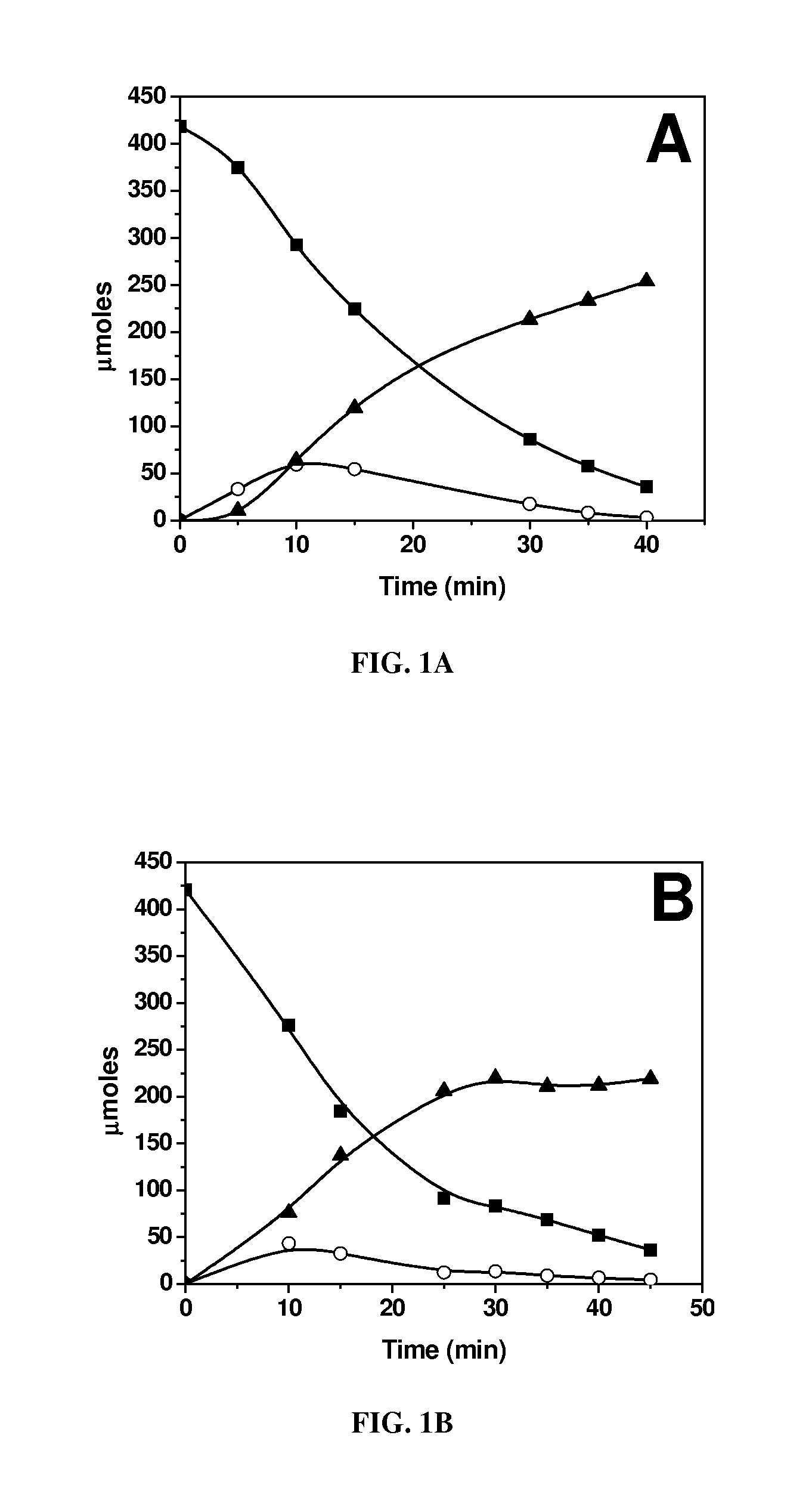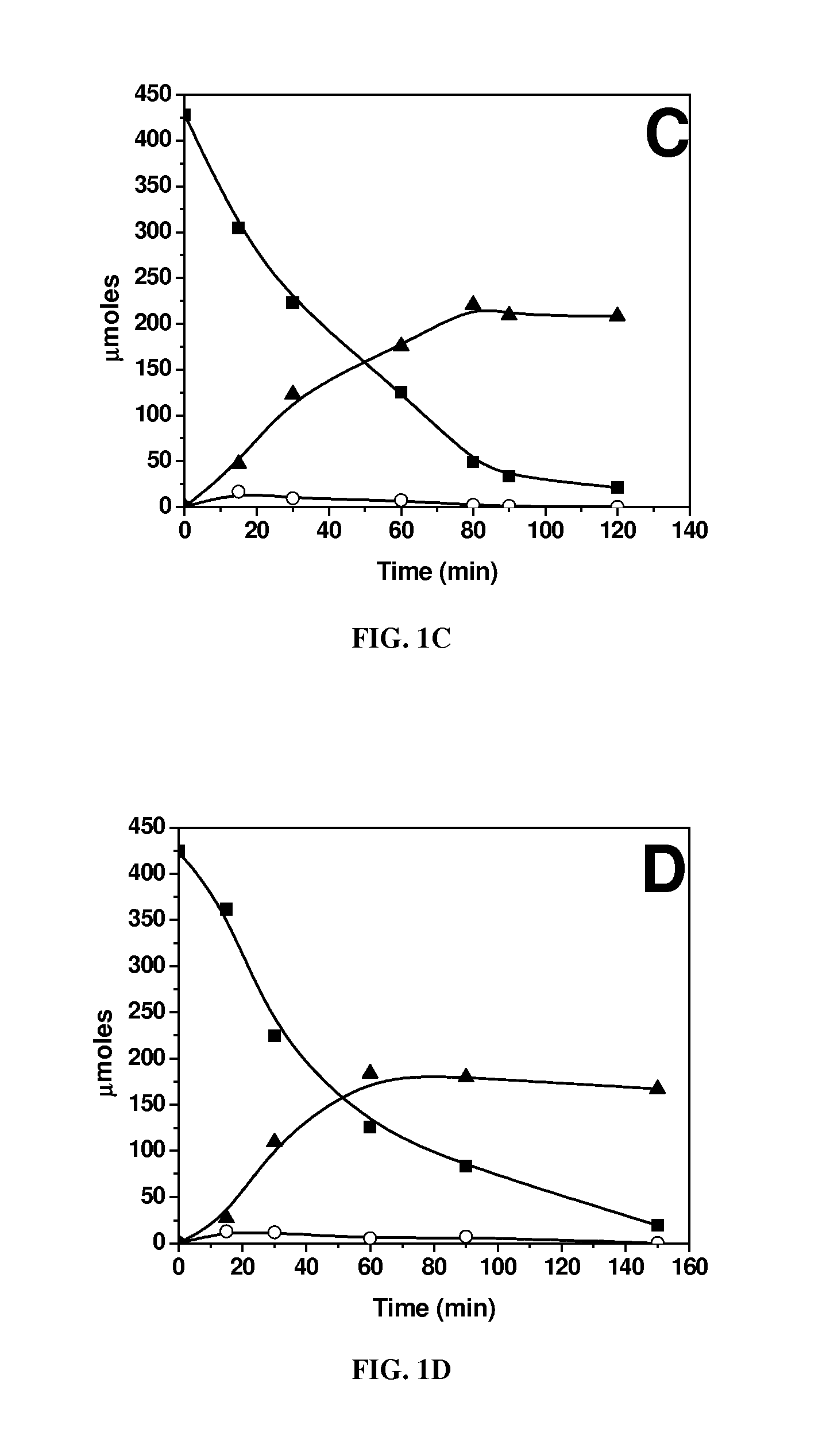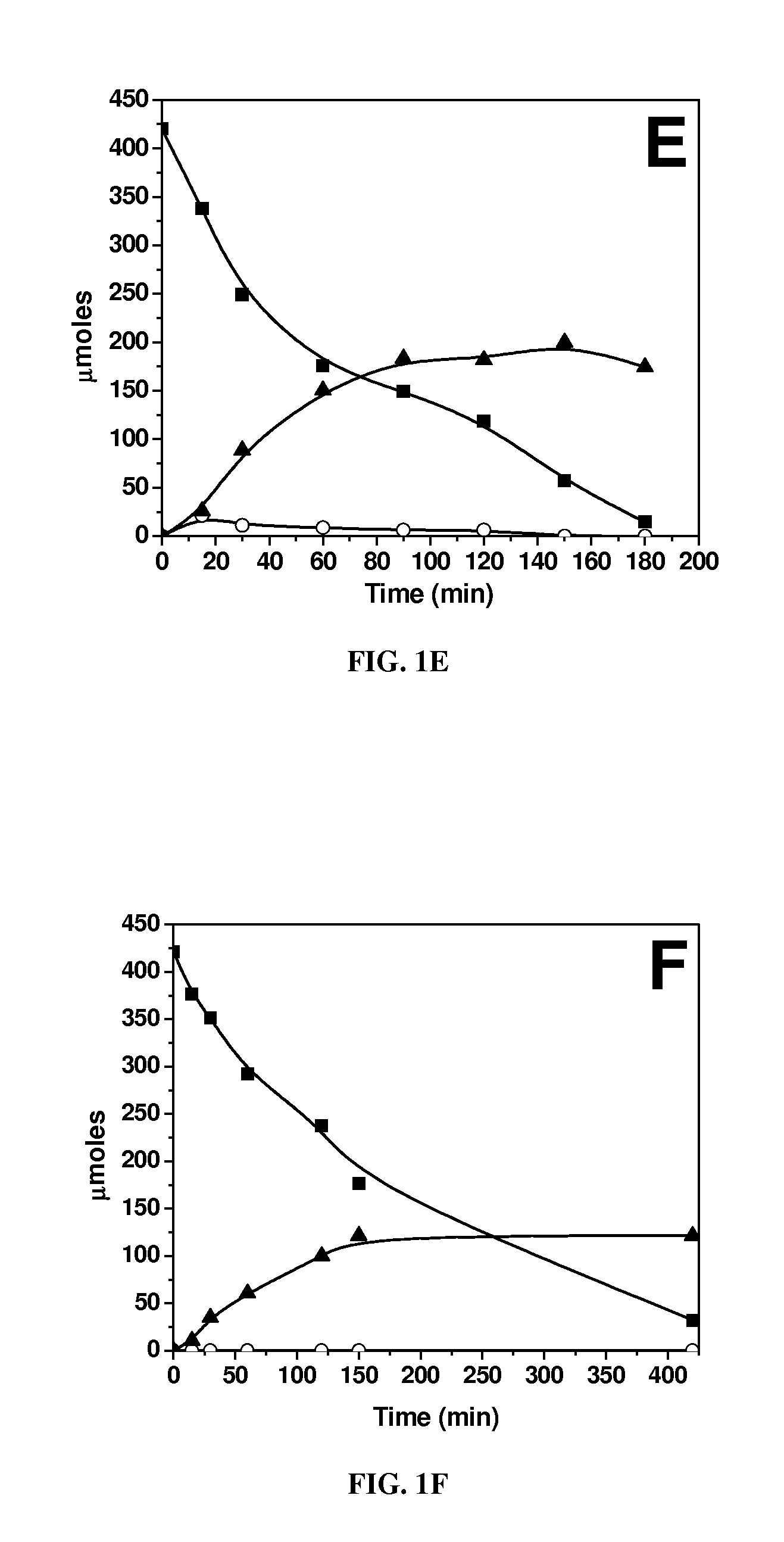Lewis and bronsted-lowry acid-catalyzed production of 5-hydroxymethylfurfural (HMF) from glucose
a technology of hmf and hmf, which is applied in the field of lewis and bronsted-lowry acid-catalyzed production of hmf from glucose, can solve the problems of typical side reactions of basic catalysts, and achieve the effects of increasing the yield of glucose to hmf, improving the efficiency of separating the desired hmf product, and low yield
- Summary
- Abstract
- Description
- Claims
- Application Information
AI Technical Summary
Benefits of technology
Problems solved by technology
Method used
Image
Examples
examples
[0063]The following examples are included solely to provide a more complete disclosure of the method described and claimed herein. The examples do not limit the scope of the claims in any fashion.
Experimental Section
[0064]Biphasic dehydration reactions were carried out in 10 ml thick-walled glass reactors (Alltech, Deerfield, Ill.) heated in an oil bath at 443 K. The oil temperature and magnetic stirring were controlled by an Isotemp digital stirring hotplate (Fisher Scientific, a wholly owned subsidiary of ThermoFisher Scientific, Waltham, Mass.). Preparation of the aqueous layer consisted of using solutions containing 5 mM AlCl3, SnCl4 or VCl3 and adjusting their pH to 2.5 with HCl, with the exception of the 5 mM SnCl4, because a SnCl4 solution at this concentration has a pH of 1.8. Solutions with 25 mM InCl3, GaCl3, LaCl3, DyCl3, or YbCl3 were prepared and adjusted to a pH of 2.5. The pH-adjusted solutions were saturated with NaCl, and glucose was added to obtain a 5 wt % aqueous...
PUM
| Property | Measurement | Unit |
|---|---|---|
| molar ratio | aaaaa | aaaaa |
| mass ratio | aaaaa | aaaaa |
| pH | aaaaa | aaaaa |
Abstract
Description
Claims
Application Information
 Login to View More
Login to View More - R&D
- Intellectual Property
- Life Sciences
- Materials
- Tech Scout
- Unparalleled Data Quality
- Higher Quality Content
- 60% Fewer Hallucinations
Browse by: Latest US Patents, China's latest patents, Technical Efficacy Thesaurus, Application Domain, Technology Topic, Popular Technical Reports.
© 2025 PatSnap. All rights reserved.Legal|Privacy policy|Modern Slavery Act Transparency Statement|Sitemap|About US| Contact US: help@patsnap.com



